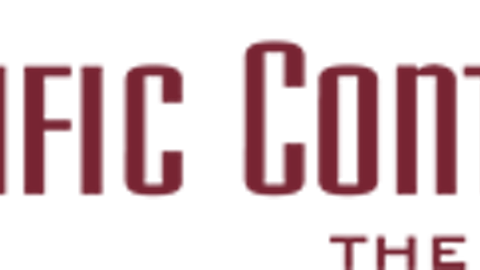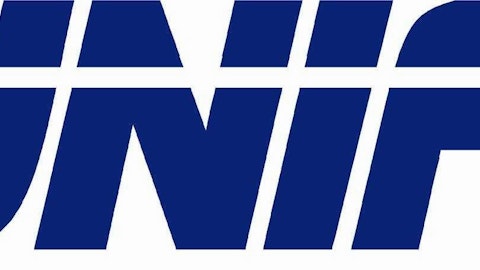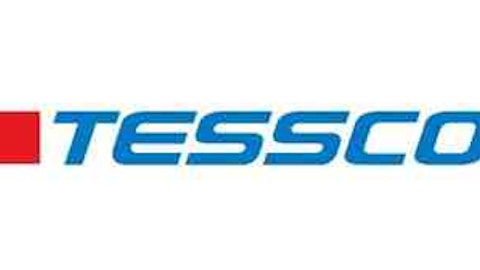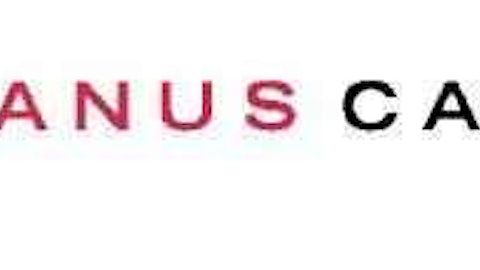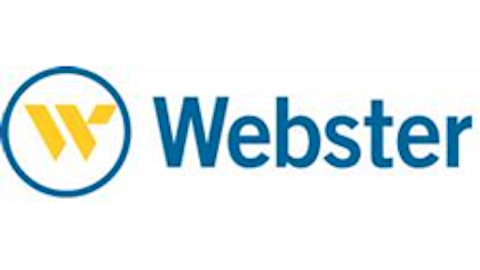Below is transcript of the Carlisle Companies, Inc. (NYSE:CSL)‘s 2014 Earnings Update Conference Call, held on Tuesday, January 20, 2015, at 8:00 am EST. Basswood Capital, Gotham Asset Management and Prescott Group Capital Management was among Carlisle Companies, Inc. (NYSE:CSL) shareholders at the end of the third quarter.

Carlisle Companies, Inc. (NYSE:CSL) is a holding company for Carlisle Corporation, and its wholly owned subsidiaries. Carlisle is a diversified manufacturing company consisting of four segments which manufacture and distribute a range of products. Its segments include Carlisle Construction Materials, which manufactures and sells roofing systems; PVC and accessories; insulation panels for roofing applications, waterproofing membranes, vapor and air barriers.
Company Representative:
Mr. David Roberts, Chairman and CEO of Carlisle Companies.
Analysts:
Ivan Marcuse – KeyBanc Capital Markets Inc
Joshua Klein – Barrons
Glen Wallmann – Analyst.
Jennifer (Operator): Good morning. My name is Jennifer, and I will a conference operator today. At this time, I would like to welcome everyone to be here in 2014 earnings update conference call. All lines have been placed on mute to prevent any background noise. After the speaker’s remarks, there will be a question and answer session.
If you would like to ask a question during this time, then please press star then number on your telephone keypad. If you would like to withdraw the question, press the pound key. Thank you. I will now turn the conference over to Mr. David Roberts, chairman and CEO of Carlisle Companies’. Please go ahead, sir.
David Roberts: Thank you Jennifer. Good morning, and welcome to our 2014 year in free earnings call. We normally don’t provide comment prior to our earnings release, which is scheduled for February 5th. We have a few issues that will negatively impact earnings the construction materials and breaking friction. But I thought it would be productive to discuss this before the 2014 year in conference call.
Before we get in to those issues, it is important to say that we are still on track for record sales and record earnings in 2014. And as we close the books on the year, there isn’t anything that we’ve seen that would suggest any difference. A construction material starting the fourth quarter- we started the fourth quarter with a very strong October. The onset of winter weather hit the most of the U.S. in the early November causing our sales to slow dramatically, and go negative, actually, compared to 2013.
Well, the amount was disappointing when the SPRI index statistics came out. In December, we found that our sales were of an equal amount to the single prior roofing industry index. The business recovered some in December, but not enough to offset to short fall in November.
We also saw our sale decline in Europe as the European economy began to slow. Compounding the impact of the slow economy was the strengthening of the US dollar. Both had a negative impact on our first quarter results. Thankfully, Europe represents less than 10% of CCM sales. So while the impact of the weakening European economy, by itself, would have been minor coupled with the weather that slowed sales in November and December, both earnings and sales were affected.
With slower demands in the US and Europe, our facilities fell overhead absorption issues as the quarter progress. Along with slowed demand, we also had a few large extraordinary expenses flowing to the income statement in the fourth quarter. Before we talk about 2014 fourth quarterly expenses let me remind you that we had $5 million, or positives, that we had in the fourth quarter of 2013.
Included in the fourth quarter of 2013 earnings was the $5 million gain broken down as such. The sale of our Cantt Washington building generated approximately $2 million. The sale was very equipped that we should have been written down in previous years was a positive $2 million, and the reduction of the medical expensive crude generate about $1 million.
In the fourth quarter of 2014, we had PVC and PPO plants startup expenses of approximately $3.5 million. We closed the Smith’s field EPS plant, costing us about a $1 million. We had some customers confessions for non warranty related issues approximately $1.3 million. We have medical costs above what we had occlude for at $1.3 million, and above $300,000 with due to effective change with strengthening U.S. dollar.
The $5 million of 2013’s positives, compared to $5million of negatives in 2014, it’s $10 million difference. For your information, the CCM factory startup cost incurred in all of 2014 will be approximately $8 million. These costs should not repeat in 2015. The good news is that the slower sale activity – or the extraordinary expenses that we incurred in the last two months of 2014 – do not, in any way, signal of slowing of U.S. demand for non residential roofing.
Quite the contrary, the general consensus among our U.S. distributors, architects and the sales organization is that the market will grow high single digits in 2015 despite weakness in Europe. When combined with positive raw material cost influenced by declining oil prices, we expect 2015 to be a very good year. At CBF, in the fourth-quarter we saw a continued decline in the sale of breaking systems to agriculture equipment manufactures, and a continued recession in the production of mining equipment. The result was the decline of revenue compared to fourth quarter 2013. Reacting to declining revenues, we do start work force incurring several costs of about $1 million.
We also encountered mixed issues, which totaled another $600,000, reduced volume which caused us another $1 million, an [inaudible 00:05:34] costing us about $700,000, and a bankruptcy of a vendor costing us $300,000. We feel the cost structure is now in line with projected 2015 production levels, which will allow us to deliver higher event margins in 2015. I won’t be addressing CIT or food service on this call, other than say they both delivered expected results in the fourth quarter. I want to now open the follow up questions. Jennifer, I would appreciate if you would go ahead and take questions for us please.
Jennifer: At this time if you would like to ask a question, please press start then the number one on your telephone key pad. Again, that is star, then the number one. Your first question is from Ivan Marcuse.
Ivan: Hi guys. Thanks for taking my questions pretty much answer the cost structure. The one thing that if oil stays at the level it is today, what do you expect the [inaudible 00:06:41] end from the raw material cost in the roofing business to be?
David: Ivan, I don’t have a dollar amount in front of me, but it would be very positive. Let’s just put it that way.
Ivan: And then, on to the liquid finish, when do you expect that to close?
David: Yeah, we are hopeful that it will close within the next month or so. But at the offset, I think it’s going to be, probably the latest would be the end of the third quarter. The end of the first quarter, not the third quarter. The end of the first quarter.
Ivan: Okay and then, last question; is there any restructuring cost in CBF that you expect to sort of flow through to impact the first quarter that we [inaudible 00:07:30] or are they pretty much all done now?
David: Now, they are pretty much done. If there would be anything it would be minor.
Ivan: Okay. Great, thanks for taking my questions.
David: You’re welcome.
Jennifer: Your next question is from Kevin Harsbar [inaudible 00:07:46].
Kevin: Hi, good morning guys. I was wondering it sound like you mentioned weather was an impact late in the quarter for CCM, do you think that this has created any pant up demands that could benefit volumes in the first quarter? And have you seen a pickup in demand so far here in the first quarter, I guess, both in the U.S. and in Europe?
David: Yeah. Let me just give you a little flavor of what the third quarter look like. October was a really big month for us. It was double digit growth. November came and was actually negative growth, and then we grew again in December but not at a rate that was equal to what October was. October was just a huge month for us.
I’m not to give you any guides for what December looks like- not December, I’m sorry, but January. But we are still expecting that 2015 is going o be a very good year in the U.S. I think Europe will be sought.
Kevin: Okay. And then can you run through how has these pricing in these products been trending with raw materials the need to come down? And I guess, how sticky is the pricing, if you can give how much do you tell you can, maybe buy product line or just in the segment as a whole?
David: Yeah. Pricing has been relatively flat. Generally, when we see an environment where raw material clause are decreasing, we are able to hold on to pricing for a quarter or two, and then pricing will generally start to follow what is going on with raw material cost. So I would expect that through the first quarter, and perhaps somehow of in the second quarter, we’ll be able to hold the existing pricing levels.
If oil continues at the rate at the rate that it is, or continues to decline, I would expect that sometime this year we will start to have to give some price back. But we are still trying to catch up from when of last year. We’ve got a reason to hold to it as long as we can.
Kevin: Got you. And then, final question going back to what Ivan asked earlier. I’m going to just a little differently, do you know, if laws states fraud at current levels, do you know – in terms of percentage – what the basket will be down on a year over year basis? Also, I’m assuming that there is some type of lag between the feed stocks declining and when your raw material is declining, do you expect further declines from whatever that number is as the year progresses?
David: Kevin, I just don’t have that information in front of me. Why don’t we address that at the February meeting? But usually, we end up with a quarter lag. So what we are doing is buying a quarter ahead. Again, if we are buying or using materials today, we bought it in the fourth quarter so we would have the effect of that price and the material that we are using today to manufacture with. So, it’s generally a quarter lag.
Kevin: Okay, thanks very much.
David: You’re welcome.
Jennifer: Your next question is from Glen Weismann. And I apologize. He has withdrawn his question.
David: Okay.
Jennifer: Your next question is from Josh Klein.
Josh: Hi, this is Josh Klein from Barron. I was just wondering if you can give us some color, Dave, on how bad Europe was so we can get a sense of like how much of impact was U.S. versus Europe?
David: The vast majority was U.S, Josh, really. The Europe was down some, and again I don’t have the number in front of me. But the vast majority of any impact we had came out of the US.
Josh: Okay. And then do you expect Carlisle to grow in line with the market or next year in some of CCM or do you expect any variance resource of what you expect for the market?
David: No, I think we will grow in line in the market. We generally do. There might be a quarter where you will pick up a percentage of market share, you lose it the next quarter. We generally, as an industry, draw our growth relatively at the same rate.
Josh: Okay. And then, I guess, in terms of the discrete items from CCM were a lot of those expected or do they all sort of come as surprises as used towards-
David: Yeah, they weren’t surprises, but we worried about them late in the quarter. As we were getting ready to start to plan closing the books, we started to see some of these additional clues pop up. So we really didn’t have a lot of advance notice, but they weren’t complete surprise.
Josh: Okay. And then lastly, I guess, is there kind of appreciable benefit in terms of how the restructuring in CBF will have on 2015?
David: Yeah, we think that CBF will have a slight uptake in margin percent. Now, keep in mind that the revenue might be done relatively flat with this year, this year being 2014. But you should see a slight uptake in margin percent based on what the volume is with the action that we took in closing [inaudible 00:13:32], which was planned, and then this lift that we all had in all of the facilities.
Josh: Thank you for all of the color.
David: You are welcome.
Jennifer: And your next question is from Jim Gianocor [inaudible 00:13:50].
Jim: How are you? Morning, guys. As far as your 2015 outlook in CCM, can you give us your take on home much of that growth is going to come from new construction. Are you going to get a new construction [inaudible 00:14:09] that maybe you haven’t seen this far or is it predominantly your take on reroofing, specifically?
David: Well, I think reroofing is still going to be the dominant percent of the overall sales. But certainly the growth, the double digit growth that will come out of our new construction then you’ll have low to mid single growth in reroofing. And reroofing, I would expect, Is going to be- as far as there is going to be a net 70% to 75% range of total volume, and then new construction being an up take, and I think it will grow faster than what it has over the last couple of years. The size is very positive for non residential construction.
Jim: I agree. Can you fabricate the margin profile between new construction and reroofing? Is there a material difference they can call out?
David: No, there really isn’t. I think we’ve said in the past to most everyone is that your dollar amount is higher with the new construction primarily because you’ve got more installation accessories and so on that go in the roof. But the margin profile is very close to the same.
Jim: Okay. And on to COS, is there a rule that we should thinking about how much cost you are targeting to take out of our efficiencies however you want to pay over the dollar amount or a percentage gain on an annual basis that you are trying to kind of study and state impact on your close structure?
David: Yeah. It’s almost [inaudible 00:15:51] on how it’s been about $20 million a year of the last, I guess it’s been five or four years now, four or five years since we implemented COS. I would expect that to slow a bit. But, at the same time with the addition of LHI and then eventually the finishing brand’s business, I think you will see significant savings come out of those two acquisitions.
We’ve already have some [inaudible 00:16:19] that we’ve held at LHI. They’ve been very productive from an [inaudible 00:16:26] stand point and from a close stand point. And we are just beginning them. So, we think we’ll get significant saving, a margin improvement out of LHI, and I would expect that we won’t get as much margin improvement in the finishing brands business, but we will get margin improvement. It’s a well run business today and I think that we will get some margin improvement, though, as we go.
Jim: Okay, thank you.
David: You are welcome.
Jennifer: Again, ladies and gentlemen if you would like to ask a question please press star then the number one on your telephone key pad. Your next question is from Neil [inaudible 00:17:08] .
Neil: Hi guys. Good morning. For CBF, you mentioned revenue might be down to relatively flat on 2015. [Inaudible 00:17:15] sounds like it was a disappointment n the quarter. But does is it your sense that this business will get significantly recur from here before it gets better? I’m just trying to understand how that-
David: Yeah, I don’t think so. [inaudible 00:17:29] was strong force up until midyear this year and it started to decline. We’ve seen construction actually pick up a bit, and mining has been mining for the last 2 1/2, 3 years. So in other words there is just not a lot going on there. In those were three big segments.
We have the aero space business we’ve found slightly in the quarter. I think that was more customer adjusting [inaudible] levels than anything. So I think aero space will be fine. I really don’t foresee anything that is going to subject that we are going to see a dramatic reduction in volume at CBS.
Neil: So overall it sounds like new construction should sort of view any sort of further declines and acts, and be relatively flat in ‘15?
David: Yeah, that’s probably not a bad theory.
Neil: Okay. And then just follow up to Kevin’s question, Dave. With CCM, you mentioned you expect you might have to give back that price later in 2015 if oil stays down. But if I recall pricing was a relatively flat maybe just a little bit in 2009 despite volumes being down, close to 25%.
With the volume back drop for 15 high single digits, is anything out there that would preclude you guys from holding a line on price particularly since the industry is relatively consolidated? I’m glad that there may be another player that has entered the market since ’09, but I would still think that you guys should be able to hold pricing relatively flat now.
David: Well, it depends upon a competitive environment. But all of our competitors were actually in a negative pricing situation, but we were getting raw material cost increases at the end of 2013 as we entered to 2014. We really weren’t seeing any relieve. We could not get any price.
So I would expect if the competitors would probably try to hold on to prices as long as they can, trying to recover what they lost in 2014. I would expect that we will do the same. It’s just a question of who is going to blink first, and start to have an impact on price. Certainly, it’s our intent to hold on price as long as we can. But again, to try and make up for what we lost in 2014.
Neil: Okay, that’s all [inaudible 00:20:02]. I just want to final on you mentioned within CCM that you don’t anticipate start up cost to repeat in 2015. Are you anticipating that it won’t repeat at the same level or there will be zero start up cost or roughly zero in 2015?
David: Actually, there might be a small amount in the first quarter, but $8 million that we identified I just don’t think that’s going to repeat. I think that we are pretty by that PBC plan, which took us a little longer to get up in line and we anticipated is actually running fairy smoothly now.
The new TPO plant in Carolina is now up and running. We are pretty good in making PPO so the ongoing clause shouldn’t be an issue for us. We just step multitude of startup that really had an impact.
Neil: Great. Thanks very much guys.
David: You are welcome.
Jennifer: And your next question is from Glen Wallmann.
Glen: Good morning Dave.
David: Hi Glen.
Glen: Just a clarification, does the [inaudible 00:21:10] growth you are expecting for CCM in 15 include the negative offset from Europe?
David: Yes. That would be a net number.
Glen: Okay. And then, you guys generally tied a long term [inaudible 00:21:22] more than 50% for CCM. Given the initial tallying from the low commodities and assuming you may have to give back some of that on price, would you still expect to proceed that long term target or do you not want to go there yet?
David: Yeah, I think it’s still too early. But if you look back, I think it was 2011 or ’12, actually at ‘12 when we had the uprising situation like we have today, you have raw material clause that we were chasing in11. We ended up holding on some of that in 2012, and we had margins, I think we finished the year at 16.7% or somewhere in that range. So there is 15% margins in this business. We would expect to, hopefully, see something like that this year.
Glen: Okay. Thanks for taking my questions.
David: You are welcome.
Jennifer: There are no question at this time. I want to now turn it back over for closing remarks.
David: Thank you Jennifer. Before I close the call I’m going to stress that CCM, CIT and CFS or food service, are expected to that they have record years in 2015. As I said earlier, CCM is going to grow high single digit with declining raw material cost and a plant start up cost that are behind us. We should see excellent leverage on our sales growth in 2015.
At CIT, we’ve had the [inaudible 00:22:53] inventory right up issue with the purchase of LHI, which is now behind us. We are seeing good results from the [inaudible 00:23:00] events that we were holding at LHI plants. And with that really is reflective of staffing and [inaudible 00;23:09] amatory reductions, and their meetings are actually exceeding our expectations for when the plan that we put together when we bought the business. AOSV is behind us now. We have that tied up. We continue to see our customers seek ways to wrap up production. So we remain very positive on CIT in 2015.
Food service has turn the corner on revenue growth. We expect to see revenue growth this year where we are relatively flat at, and to continue making progress and improving profitability. We expect to see both, sales and earnings, improve in 2015 at food service. CBF is our only wildcard. We’ve adjusted our staffing level to reflect their current customer order rates. We don’t expect to find a recover in 2015, but we should see flat sales within uptake in earnings. The good thing is CBF represents approximately 10% of our total revenue.
We continue to make progress with FTC in gaining approval for the acquisition of [inaudible 00:24:22] finishing brand business. We hope to have the business in the full by the end of the first quarter, with any luck perhaps a little sooner than that. That business continues to form at a very high level under the current management team. So we are excited to get it finalized and get it into Carlisle. I’ll provide Carlisle and issue the businesses as we do our earnings call line at February 5th. So until then, Jennifer we are finished. You can end the call now.
Jennifer: Thank you ladies and gentlemen. That concludes today’s conference call. You may now disconnect.
